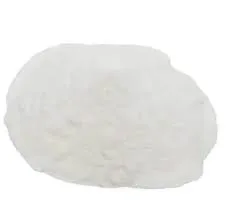
Aug . 17, 2024 05:36 Back to list
Understanding the Role of Hydroxypropyl Methyl Cellulose in Dietary Supplements and Health Products
Hydroxypropyl Methyl Cellulose in Supplements An Overview
Hydroxypropyl methyl cellulose (HPMC) is a cellulose derivative that has garnered considerable attention in the health and wellness industry, particularly in dietary supplements. As a semi-synthetic polymer, HPMC is widely used for its various functional properties, which enhance the effectiveness and stability of nutritional products.
What is Hydroxypropyl Methyl Cellulose?
Hydroxypropyl methyl cellulose is produced by modifying cellulose, a natural polymer derived from plant cell walls. The modification process introduces hydroxypropyl and methyl groups, which alter the physical and chemical properties of cellulose. As a result, HPMC is water-soluble and forms a gel-like consistency when mixed with water, making it an excellent ingredient for various applications.
Role of HPMC in Supplements
1. Binding Agent One of the primary uses of HPMC in supplements is as a binding agent. It helps to hold the ingredients together in tablet formulations, ensuring that they maintain their shape and integrity. This is especially important for manufacturers aiming to produce high-quality supplements that deliver consistent dosages.
2. Thickening Agent HPMC also acts as a thickening agent, enhancing the texture and viscosity of liquid formulations. This functionality is particularly useful in drinkable supplements, where a thicker consistency improves mouthfeel and palatability, making the product more appealing to consumers.
hydroxypropyl methyl cellulose in supplements

3. Stabilizer The stabilizing properties of HPMC help in preventing the separation of ingredients in emulsified products. This is crucial in supplement formulations that contain both oil-soluble and water-soluble vitamins, where uniform distribution of nutrients is essential for optimal absorption.
4. Controlled Release HPMC is sometimes employed to create controlled-release formulations, where the release of active ingredients is regulated over time. This is beneficial for supplements aiming to provide a sustained effect, thus enhancing the bioavailability of nutrients in the body.
Safety and Regulatory Status
HPMC is recognized as safe (GRAS) by the U.S. Food and Drug Administration (FDA) and has a long-standing history of use in food and pharmaceutical products. It is non-toxic, inert, and does not cause adverse reactions in the majority of the population. However, like all substances, individual sensitivities can vary, so it's advisable for consumers with specific health conditions or dietary restrictions to consult with healthcare professionals before incorporating HPMC-containing supplements into their regimen.
The Future of HPMC in Supplements
As the demand for dietary supplements continues to rise, the role of HPMC is likely to expand. Its versatility and functionality allow it to adapt to new formulations and innovative delivery systems. Moreover, with the growing trend towards plant-based and vegan-friendly products, HPMC offers an appealing alternative for those looking for non-animal derived ingredients for their supplements.
In conclusion, hydroxypropyl methyl cellulose is a multifunctional ingredient that plays a significant role in the formulation of dietary supplements. Its properties as a binding agent, thickener, stabilizer, and controlled release excipient highlight its importance in the industry. As consumers become more health-conscious and demanding of quality in their supplements, the utilization of HPMC will likely continue to grow, making it an integral part of future supplement development.
-
Versatile Hpmc Uses in Different Industries
NewsJun.19,2025
-
Redispersible Powder's Role in Enhancing Durability of Construction Products
NewsJun.19,2025
-
Hydroxyethyl Cellulose Applications Driving Green Industrial Processes
NewsJun.19,2025
-
Exploring Different Redispersible Polymer Powder
NewsJun.19,2025
-
Choosing the Right Mortar Bonding Agent
NewsJun.19,2025
-
Applications and Significance of China Hpmc in Modern Industries
NewsJun.19,2025







